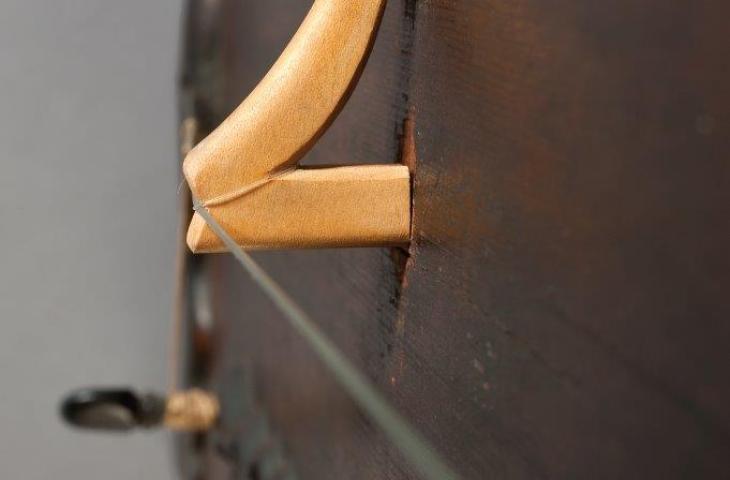Trumpet marine or nun’s trumpet

Trumpet marine or nun’s trumpet, F. Houyet, Namur, 1680, inv. 0217
Contrary to what its name might suggest, the trumpet marine or nun’s trumpet is a single stringed instrument, the name probably being derived from the Latin tromba mariana, meaning Maria trumpet. In the seventeenth and eighteenth centuries it was, in fact, sometimes played in nunneries. It replaced the trumpet as a signalling instrument, as this last was too reminiscent of the male authority of rulers and military commanders.
Although it does not have the external appearance of a natural trumpet, its sound has something of the timbre of one that is muted. The comparison is reinforced by the fact that it can produce only harmonics. To generate these, the player works a short bow across the string, lightly touching the string with a finger of the other hand. The vibrations of the string set a bridge with a bent foot vibrating and this last in turn gently rattles against the wood of the sound-box. The harmonics in combination with the buzzing sound created by the foot evokes the sound of a brass instrument.
The instrument shown here was made by F. Houyet, an instrument maker from Namur, of whom, unfortunately, virtually nothing is known.